








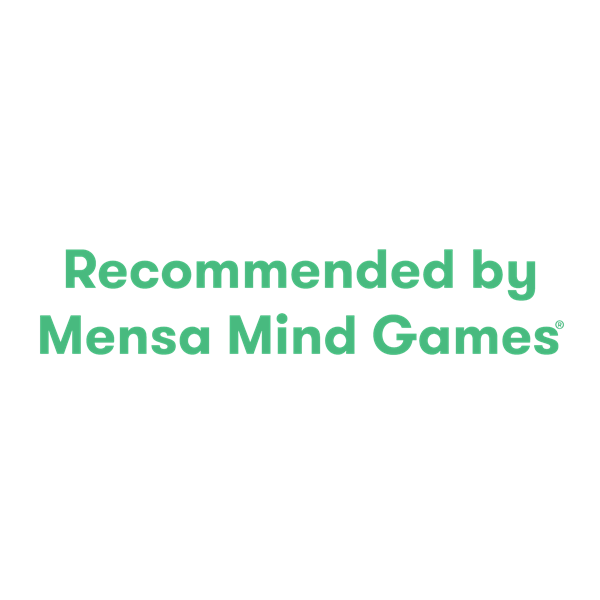




Collapsible content
A game where players challenge their creativity and imagination and choose from 47 unique wooden shapes to create a subject that other players can guess.
You can play Asymbol with 3-6 players, ages 8 and up.
Asymbol is good for developing Creativity Skills as each player imagines ways to use the various shaped pieces to create the chosen subject from their card with the goal of getting the other players to guess it correctly.
Asymbol also helps with Spatial Reasoning Skills.
Based on the announced category, players observe how the shapes are being put together and try to guess what is being created.
• Place all 47 pieces in the middle of the play area.
• Shuffle the card deck, and place it facedown next to the pieces, creating a draw pile.
• Give each player a pass token to be placed near them.
• Hand the scorepad and pencil to a player to keep score for each round.
• When starting the game, determine how many rounds to play before the game ends. A round ends when each player has had the chance to be the assembler.
• The first player to name a shape starts as the first assembler.
• Make sure the assembler can reach the pieces and has enough space in front of them.
Players take turns being the assembler by drawing a card, choosing one of the two category/subject combinations, and using the various shaped pieces to create their subject. At the same time, the other players try to guess what is being assembled. The correct guesser and the assembler each earn a point. The player with the most points at the end of the game wins.
On your turn, draw the top card from the deck, keeping it hidden from the other players, and choose one of its two subjects. Each card has two subjects to choose from, each in a different category. Review the options and choose one or use your pass token.
Pass Token
If both subjects are unfamiliar or too challenging, you may use your pass token to discard your current card and draw a new one from the draw pile. After using the token, return it to the box. Each player has only one opportunity to use their token so choose wisely.
Categories
When you are ready to start, announce the category of your chosen subject.
Only share the category and not the subject you are going to create.
The four categories are:
THING—everyday items and objects
PLACE—real locations or settings
BEING—real or imaginary people and creatures
EVENT/ACTIVITY—real or historical occurrences or everyday activities
Assembling and Guessing
To create your subject, use any number of the pieces from the play area. You can assemble with pieces building vertically or by lying them flat. Moving the pieces is allowed to show motion and help portray your subject.
You may not speak while you build but making sound effects is allowed. You may use body language (nods and hand gestures) to indicate if a player’s guess is on the right track or not.
Once you begin to assemble, all the other players can start guessing. They guess at the same time and can continue to make guesses until someone’s guess is correct. There is no time limit, but you may end your turn if you feel like no one can correctly guess the subject. Otherwise, the turn ends after a correct guess, and play continues clockwise.
The first player to correctly guess the subject gets a point.
If multiple players guess correctly at the same time, they all get a point. As the assembler, you also receive a point for successfully creating a subject that another player could recognize. If there are no correct guesses and you choose to end your turn, then no one scores any points that turn.
Return all the pieces you used to the play area, and place your card in the discard pile.
Play continues clockwise with the next player becoming the assembler, drawing a new card, announcing a category and creating their subject with the pieces.
After the agreed upon number of rounds has been completed, the player with the most points wins.
In case of a tie, the players share the victory.
With 47 unique shapes to work with there is no limit to the creativity and fun as you challenge others to guess your vision with Asymbol!

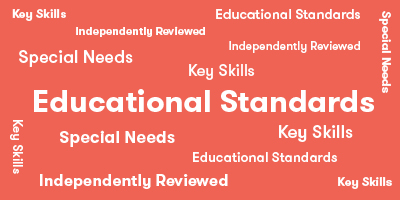
Core Standard*: Language
Reading
- Reading: Foundation Skills
- Phonics and Word recognition. Grade Levels 3rd, 4th
- Speaking & Listening
- Comprehension and Collaboration Grade Levels 3rd, 4th, 5th
- Language
- Conventions of Standard English Grade Level 5th
Math
- Geometry
- Reason with shapes and their attributes. Grade Levels 3rd

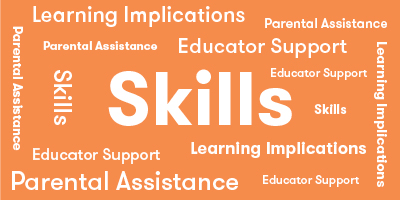
Explore
What Does Child Do To Use Skill In The Game?
Players look for and at pieces as they think about possible combinations to make something that will prompt a correct guess from other players.
How Parents Can Assist Learning
Parent support is likely not required. However, parents may support children's exploration by suggesting they rotate pieces to reveal different perspectives and try out different combinations before selecting their final set up pieces to use.
Learning Implications and Educator Support
Asymbol is a great game for developing spatial reasoning skills as children need to examine different pieces and effects of placing them in certain directions. For example, a shape can look both like an M and W depending on orientation. Additionally, children are thinking how to assemble pieces in vertically and/or horizontally to create new objects for others to guess from.
Educators may support children's exploration by suggesting they rotate pieces to reveal different perspectives and try out different combinations before selecting their final set up pieces to use.
Determine
What Does Child Do To Use Skill In The Game?
Players need to decide what to create that other players will likely recognize, and which selection and assembly of pieces will work best to make their creation. They may also determine to make sounds to help others guess accurately.
How Parents Can Assist Learning
Determining and exploring happen simultaneously when playing Asymbol. Parents may want to encourage children to pick up and play around with different pieces to help them think about which pieces would work best to assemble together into the subject on their card.
Learning Implications and Educator Support
As children explore the game pieces, they will be thinking spatially and strategically about which may work best to create the subject on their card.
Educators may introduce the game to children in practice rounds by providing a few pieces that can be readily used to make a representation of a specific subject. This can help children learn how to assess and assemble pieces into objects others' will recognize. It also allows other players to practice guessing.
Compare
What Does Child Do To Use Skill In The Game?
Players will mentally compare options when selecting and assembling certain pieces prior to settling on the final set they will use in an attempt to make the subject on their Asymbol card that others will guess.
How Parents Can Assist Learning
Parents may want to encourage children to pick up and play around with different pieces to help them think about which pieces would work best to assemble together into the subject on their card.
Learning Implications and Educator Support
Educators may want to encourage children to pick up and play around with different pieces to help them think about which pieces would work best to assemble together into the subject on their card.
Remember
What Does Child Do To Use Skill In The Game?
When selecting a subject to assemble, players will need to recall what that subject is (ex: "the beach"), and which elements of the subject would be best to create (ex: waves, a surfer, big umbrella).
How Parents Can Assist Learning
No special parent support is required.
Learning Implications and Educator Support
No special educator support is required.
Predict
What Does Child Do To Use Skill In The Game?
When deciding what to create, players must think about how others may perceive their creation in order to increase probability of a successful guess.
How Parents Can Assist Learning
Parents can help children be more successful on their turn by asking open-ended questions like "what can you make that would make it easier for others to guess?" or "what is the most important feature of the subject you are trying to make?"
Learning Implications and Educator Support
In Asymbol, effective prediction requires changing perspective skills. Children will be more successful if they imagine being the other players, and think about what those players may know and be good a guessing.
Educators can help by asking open-ended questions like "what can you make that would make it easier for others to guess?" or "what is the most obvious feature of the subject you are trying to make?"
Plan
What Does Child Do To Use Skill In The Game?
Concurrent with using skills like exploring, determining and predicting, players plan how to combine and orient pieces so that others can guess what they have made. They also plan whether and when to add sound effects.
How Parents Can Assist Learning
To help children who are impulsive, encourage them to think first before assembling.
This can help them consider what others are most likely to guess, and to formulate a mental image of what they want to assemble, which can help create a more successful creation.
Learning Implications and Educator Support
Because other players can guess during the building of a subject, it is helpful for the child to mentally prepare how to assemble the Asymbol pieces together.
For example, if the subject is a surfer, the child may create "waves" first, then add a "surfboard", and then add a "surfer". Alternatively, the player could assemble everything at once, and then reveal the creation in the hopes that a complete object will be easier to guess than during the building process.
Experiment
What Does Child Do To Use Skill In The Game?
In Asymbol, effective prediction requires changing perspective skills. Children will be more successful if they imagine being the other players, and think about what those players may know and be good a guessing.
Educators can help by asking open-ended questions like "what can you make that would make it easier for others to guess?" or "what is the most obvious feature of the subject you are trying to make?"
How Parents Can Assist Learning
There is no special parent support needed.
Learning Implications and Educator Support
There is no special educator support needed.
Solve
What Does Child Do To Use Skill In The Game?
All players are problem-solving on each turn. The Asymboler picks a subject, selects pieces and then constructs their solution. Simultaneously, all the other players look and listen in order to guess what the Asymbler is making.
How Parents Can Assist Learning
The more children play, the more they will develop varied strategies and approaches for selecting and assembling pieces along with adding sound effects and motion.
The ability to shift strategies based on new information can help children cope with the stresses of change in other areas of their life.
Parents can encourage problem-solving by asking children to explain why they made certain choices and discuss options with other players to determine why a creation did or did not work in eliciting a correct guess.
Learning Implications and Educator Support
Asymbol involves complex spatial reasoning, logic and fine motor skills, as well as perspective changing, strategy and curiosity. Playing also builds empathy, imagination and creativity.
The more children play, the more they will develop varied strategies and approaches for selecting and assembling pieces along with adding sound effects and motion.
Educators may want to explore children's thinking by asking them to explain why they made certain choices and to evaluate the consequences of those choices. This can help children develop stronger empathy, logic, analytical and reasoning skills more quickly.
Review
What Does Child Do To Use Skill In The Game?
While not required, players may review what they did after a turn ends.
How Parents Can Assist Learning
Parents can encourage problem-solving by asking children to explain why they made certain choices and discuss with other players to determine why a creation did or did not work in eliciting a correct guess.
Learning Implications and Educator Support
Educators may want to explore children's thinking by asking them to explain why they made certain choices and to evaluate the consequences of those choices. This can help children develop stronger empathy, logic, analytical and reasoning skills more quickly.
Imagine
What Does Child Do To Use Skill In The Game?
Players need to imagine a way to represent the subject using the abstract Asymbol shapes so that others will guess correctly.
How Parents Can Assist Learning
Imagination can be sparked by playing around with pieces. Encourage children to pick up and rotate pieces to reveal different perspectives and try out different combinations to help fuel their imagination.
Because the goal is to get other players' to guess accurately, children also need to imagine how others will perceive what they create. Parents can help children be more successful by asking open-ended questions like "what can you make that would make it easier for others to guess?" or "what is the most important feature of the subject you are trying to make?"
Learning Implications and Educator Support
Imagination can be sparked by playing around with pieces. Encourage children to pick up and rotate pieces to reveal different perspectives and try out different combinations to help fuel their imagination.
Because the goal is to get other players' to guess accurately, children also need to imagine how others will perceive what they create. Educators can help children be more successful by asking open-ended questions like "what can you make that would make it easier for others to guess?" or "what is the most important feature of the subject you are trying to make?"
Create
What Does Child Do To Use Skill In The Game?
Once a player has thought up what to make and selected the desired pieces, they get to create what they imagined by assembling the pieces together and, perhaps, add sound effects and motion.
How Parents Can Assist Learning
Creating what you have imagined can be challenging. If children are having a difficult time, discuss what that are trying to create and ask guiding questions such as "can you see another piece that looks more like the object you want to make?" or "what would happen if you built your creation, rather than laid it out flat on the table?"
Learning Implications and Educator Support
Because of the array of pieces, Asymbol provides children many options to imagine and create objects that match or evoke the subject on their card.
If children are having a difficult time, discuss what that are trying to create and ask guiding questions such as "can you see another piece that looks more like the object you want to make?" or "what would happen if you built your creation upward, rather than laid it out flat on the table?"
*Data compiled from CCSSI ELA Standards, WA Science Standards, and Washington Social Studies Standards

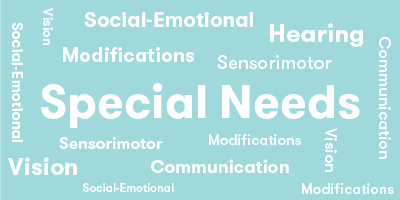
Cognitive
Suggestions for How to Modify Play Experience
Sort through the cards to find simple subjects (e.g., house, headphones, kite) that require just a few pieces to create. Events and beings may be harder to envision and create, so omit them.
Allow the child to have a “guessing partner.” Guessing others’ constructions may be harder than making your own figure.
Have a partner for reading the card and creating the selected figure. This is an additional challenge as it requires discussion between the partners. However, it might tip off the other players. Possibly allow partners to create their figure on the box lid out of hearing-range of the other players.
Communication
Suggestions for How to Modify Play Experience
This is a great game for children with communication issues, as they don’t need to talk (just read the card). They can point to the appropriate symbol on their pass token to announce what they are making, and they can use gestures to encourage or deter wrong responses.
Sensorimotor
Suggestions for How to Modify Play Experience
Children with fine motor control problems may have problems manipulating the small pieces. Asymbol may be too challenging for them to build figures, but they can partner with someone to build their structure. This is challenging it requires discussion between the partners that would tip off the other players. Possibly allow partners to create their figure on the box lid out of hearing-range of the other players.
Social Emotional/Behavioral
Suggestions for How to Modify Play Experience
Children with low frustration tolerance may have difficulty with Asymbol if other players have cannot guess what they constructed. These children may also become frustrated if they don’t have the ability to imagine what other people have made. Start with easier cards and work up to harder ones.
To reduce frustration for children who are impatient, use a timer and set an agreed upon time limit for guessing what the figure is that a player created.
Vision
Suggestions for How to Modify Play Experience
The pieces are small and neutrally colored, so they may be difficult for children with low vision to see. Asymbol is not recommended for these children or children who are blind.
Hearing
Suggestions for How to Modify Play Experience
Asymbol may be difficult for children with hearing impairment, particularly if players are shouting or signing words at the same time. Players may take turns by raising their hand if they have a guess.
*Data compiled from CCSSI ELA Standards, WA Science Standards, and Washington Social Studies Standards

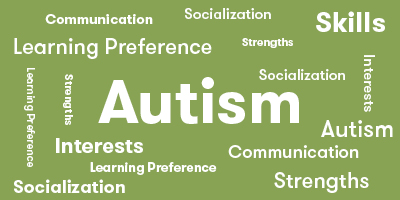
Autism Strengths & Interests
Short Summary of Strengths & Interests
- Fine motor skills
- Creativity
- Decision making
Is good at matching visual items
Is This Game Appropriate? Yes
Description
Players do not exactly match items, but they have to visualize which shapes most closely match the key aspects the player wishes to depict.
Has a good memory for sensory details, including visual, touch, taste and smell
Is This Game Appropriate? Yes
Description
Remembering key aspects and positioning of components are important for creating representations that can be recognized.
Has a good memory for words, phrases and dialouge
This game is not appropriate
Has a good memory for pictures, numbers and patterns
Is This Game Appropriate? Yes
Description
Most items are comprised of patterns and shapes combined to represent something (e.g., a snowman is three circles). Players who can create and recognized those familiar patterns will have fun with Asymbol.
Likes to put things in order or a sequence
Is This Game Appropriate? No
Description
The small pieces are combined in a variety of ways to create a symbolic representation of something. An order is implied, but each player will view the order and sequence differently. If the child is looking for a specific order or sequence, Asymbol may be challenging.
Learns through visualizing or "replaying" actions in their mind
Is This Game Appropriate? Yes
Description
Visualizing is what enables players to re-create their item. Some children will be able to do this well, but others may visualize and focus on components that are key to them, but not others, making their creations unrecognizable to others.
Likes activities with rules, such as math and phonics
This game is not appropriate
Is very concrete and literal
Is This Game Appropriate? No
Description
Asymbol requires abstract thinking.
Learns in small "chunks" (for example, phone numbers are 3 chunks of number xxx-xxx-xxxx that are combined together)
This game is not appropriate
Is good at nonverbal reasoning and logic
Is This Game Appropriate? Yes
Description
Thinking about what aspect will be most recognizable to others is important to problem solving with Asymbol. If the child has difficulty seeing what others see (a common issue for children with autism), Asymbol may be challenging. They may see key aspects differently than others.
Likes spatial problem solving
Is This Game Appropriate? Yes
Description
The spatial arrangement of pieces is key to both the creation and the recognition of the item that is made.
Can read well with good vocabulary, though may not fully comprehend content
Is This Game Appropriate? Yes
Description
Players only need to read and understand the two options on the card selected.
Likes to use and has good fine motor skill
Is This Game Appropriate? Yes
Description
The small pieces require precise fine motor skills.
Likes established routines or set ways of doing things
This game is not appropriate
Likes manipulating, constructing or building things
Is This Game Appropriate? Yes
Description
Asymbol requires manipulating shapes to create representations of beings, objects, places or events.
Likes to use and has good musical abilities
This game is not appropriate
Likes to use and has good drawing skills
This game is not appropriate
Autism Special Considerations
Appears to ignore other's communication and/or has difficulty giving eye contact to a communication partner
Is This Game Appropriate for Child with Characteristic? No
Can Child with Characteristic Play Game w/o Modification? No
Strategies for Developing Compensatory Skills:
Communication is a key aspect of Asymbol, as players need to guess what another player has created with the small shapes. Eye contact is not necessary, but listening and responding to others is important. If this is problematic for the child Asymbol is not a good match for the child.
Has difficulty understanding complex verbal directions
Is This Game Appropriate for Child with Characteristic? Yes
Can Child with Characteristic Play Game w/o Modification? Yes
Strategies for Developing Compensatory Skills:
The directions for Asymbol are not complicated. On their turn, a player merely draws a card and decides which of the two options on the card they are going to try to represent.
Uses vocabulary inaccurately or demonstrates echolalia (repeating another's speech)
Is This Game Appropriate for Child with Characteristic? Yes
Can Child with Characteristic Play Game w/o Modification? No
Strategies for Developing Compensatory Skills:
Unless the child's echolalia is distracting to other players or the child cannot focus on the game, echolalia should not hinder the play. Providing a fidget toy may help the child attend to the game. If the child's attention is too impacted, the game may not be a good match. If the child starts talking about or naming what they are building, this will defeat the purpose of the game.
Gets stuck repeating a verbal topic or physical actions and/or has difficulty attending to others' actions or topic.
Is This Game Appropriate for Child with Characteristic? No
Can Child with Characteristic Play Game w/o Modification? No
Strategies for Developing Compensatory Skills:
Extensive monologues on extraneous topics or actions may keep the child from watching what is happening in the game. If children cannot focus on the actions in the game, Asymbol may not be a good choice. Some children with autism may also repeat the words on the card that tells them what to create. The game is not appropriate for children who cannot suppress repeating the words on the card.
Has difficulty producing speech/communication
Is This Game Appropriate for Child with Characteristic? No
Can Child with Characteristic Play Game w/o Modification? No
Strategies for Developing Compensatory Skills:
Players need to guess what another player has created with the shape blocks. Difficulty with speech or communication may hinder participation. If children can produce one-to-two-word intelligible communications, they should be able to play Asymbol. More severe communication concerns may inhibit fluid play. Players may want to allow the player with communication concerns to have a separate turn, without having to shout over other players.
Has difficulty sequencing multi-step actions and/or doing complex abstract tasks
Is This Game Appropriate for Child with Characteristic? No
Can Child with Characteristic Play Game w/o Modification? No
Strategies for Developing Compensatory Skills:
Asymbol requires abstract thinking. Although using concrete objects, the child needs to envision how various shapes can be combined to represent a thing, being, place, event or activity. Some children with high functioning autism may have creative conceptions of how to combine the blocks, but children who are more challenged may find this game too abstract. For these children Asymbol may not be a good match.
Demonstrates difficulty initiating and maintaining social interactions
Is This Game Appropriate for Child with Characteristic? No
Can Child with Characteristic Play Game w/o Modification? No
Strategies for Developing Compensatory Skills:
Asymbol is a social game, but children can play by focusing on the objects rather than the social interaction. The child with autism will be more focused on determining what the blocks represent. The combination of the abstract nature of the game and intense social participation needed may make Asymbol overwhelming for some children with autism.
Acts out or demonstrates avoidance behaviors when frustrated, overwhelmed, or needs more sensory input.
Is This Game Appropriate for Child with Characteristic? Yes
Can Child with Characteristic Play Game w/o Modification? No
Strategies for Developing Compensatory Skills:
Fidget toys, a break for movement, or deep breathing may help the child self calm. Let the child indicate what he wants to do to calm down when he becomes frustrated. If the characteristics of the game, rather than the child's temperament is the cause for loss of self-control, Asymbol is not a good match for the child.
Has short attention span for non-preferred activities
Is This Game Appropriate for Child with Characteristic? Yes
Can Child with Characteristic Play Game w/o Modification? No
Strategies for Developing Compensatory Skills:
If the child likes manipulating small objects and creating representations, Asymbol is a good match. If, however, the child has difficulty seeing how shapes can be combined in different ways to represent various ideas, Asymbol is too challenging.
Needs sameness or consistent routines and/or has difficulty with transitions from one activity to another
Is This Game Appropriate for Child with Characteristic? Yes
Can Child with Characteristic Play Game w/o Modification? No
Strategies for Developing Compensatory Skills:
Although each turn is played the same way, the concepts players need to create vary in difficulty. Players may have a harder time representing the range required. Start with the cards that only have "things," as those are more concrete and easier to envision.
Has difficulty understanding others' feelings, intentions, and the reasons for others' actions.
Is This Game Appropriate for Child with Characteristic? Yes
Can Child with Characteristic Play Game w/o Modification? Yes
Strategies for Developing Compensatory Skills:
Players do not need to attend to others feelings to be able to play Asymbol. Players focus on trying to make accurate guesses with each players turn.
*Data compiled from CCSSI ELA Standards, WA Science Standards, and Washington Social Studies Standards

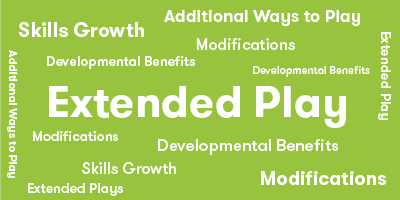
Extra Ways to Play the Game
Eliminate the cards. Rather, picking one of the categories from the game, a player writes on a piece of paper what they will try to get others to guess. The player then Asymbles the creation and the other players guess. Each succeeding player also makes up a word from one of the categories. The player needs to be able to demonstrate a solution. This will keep players from providing "impossible" words.
Materials Needed
Pencil and paper.
Developmental Benefits
Having players create their own ideas to represent makes them think about what can be made and what pieces might be able to be used. Using the categories requires players to search their memories for different types of figures that can be created.
Extra Ways to Play the Game
Eliminate the cards. Rather, picking one of the categories from the game, a player writes on a piece of paper what they will try to get others to guess. The player then Asymbles the creation and the other players guess. The person who guesses correctly then creates something that “goes with” or is associated with the previous item. This continues until all of the pieces are used.
Materials Needed
Paper and pencil.
Developmental Benefits
This expansion adds an element of associational thinking and logic. Players must think of something related to the previous concept.
*Data compiled from CCSSI ELA Standards, WA Science Standards, and Washington Social Studies Standards
Game Details
- 112 Cards
- 47 Asymbol Pieces
- 6 Pass Tokens
- 2 Pencils
- 1 Scorepad
- 1 Storage Bag
- 1 Rules Booklet
- Choosing a selection results in a full page refresh.
- Opens in a new window.

















